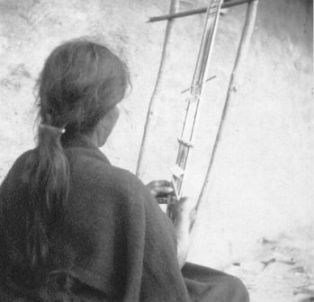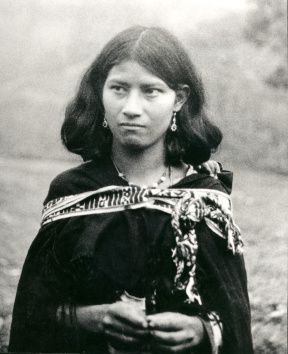The chumbe is a belt that can measure from five to ten centimeters wide, by four or five meters long. It is used by the Guambiana and Paeces women of Cauca and the Ingas of the Sibundoy Valley to hold theanacus or traditional skirt. The chumbes are woven by the women with woolen threads of several colors, with which, by means of diamonds, they form the figures of the original art.
Contents
ToggleThe Chumbe
These belts are more than clothes: they express history and thought. Through their designs, they represent a series of forms linked to history and experiences.

Woman weaving Archivo fotográfico del ICANH.
A special belt is woven exclusively to wear and protect children, to " chumbarlos'. It serves as a garment to wrap the body of the child, crossing it over the mother's back and thorax, thus creating a maternal bond with him, linked through the use of the chumbe as a unifying element and identity of the family bond. In the specific case of the ingas, the belt has as its main element the geometric figure of the rhombus (abstraction of the anatomical conformation of the stomach), which in turn symbolizes the place where life begins (the woman's belly) and the place where men live together (the world with its four cardinal points).

Colección Etnográfica del ICANH.
It is said that the son of the stars, Juan Tama, coming out of the waters, felt naked and surrounded by the nature of the desert and his animal life; the spirits of the nine maidens took the threads of the rainbow and wove the chumbe with their hands, the skin of the animals was transformed into anacus, capisayo and turí.

Nasa- paez woman Archivo Fotográfico del ICANH
(Mananasrik Wan Wetotrik. Documento del cabildo del pueblo indígena, 1998. Extract from: Javier Baena Espinel, “Dimensión Estética en el Diseño de los Chumbes Paeces y Guambianos”. Icesi University).